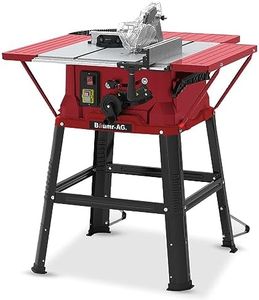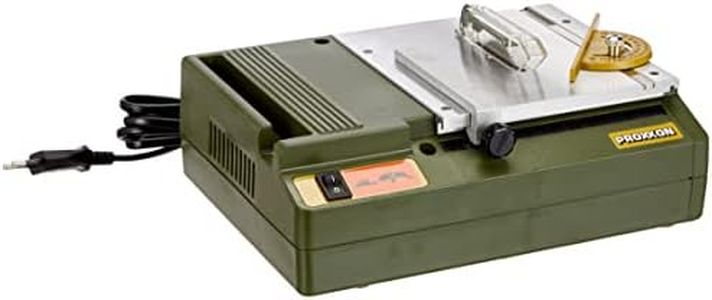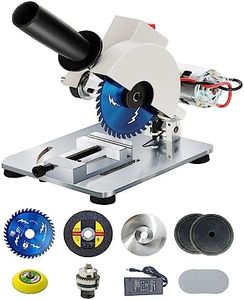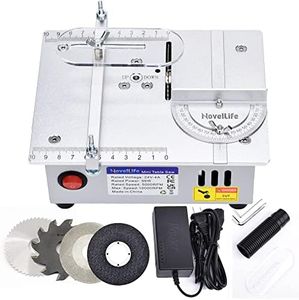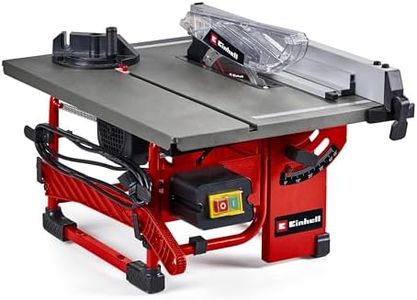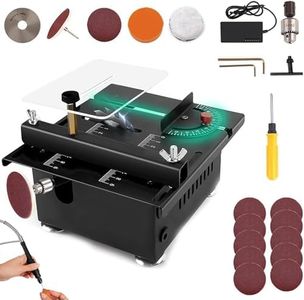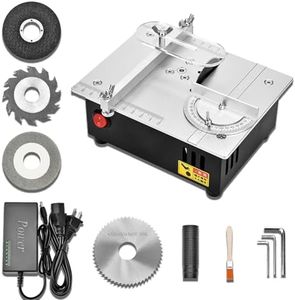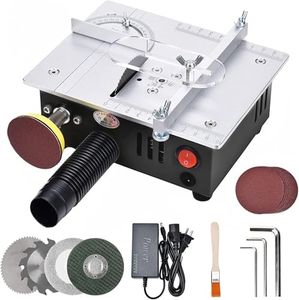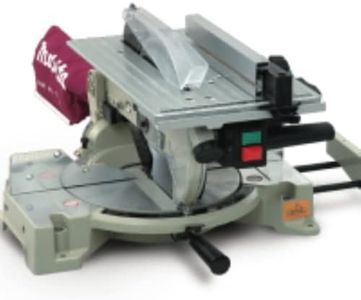We Use CookiesWe use cookies to enhance the security, performance,
functionality and for analytical and promotional activities. By continuing to browse this site you
are agreeing to our privacy policy
10 Best Table Saws
From leading brands and best sellers available on the web.By clicking on a link to a third party's website, log data is shared with that third party.
Buying Guide for the Best Table Saws
Choosing the right table saw is all about matching the tool to the type of woodworking you plan to do. Think about the scale of your projects, how often you'll be using the saw, your available workspace, and whether you'll need to move the saw around. Table saws can range from lightweight and portable for small home projects to large, heavy-duty machines designed for studios or professional workshops. Pay attention to both the safety features and the ease of use, as these will make your woodworking more enjoyable and less stressful. Always prioritize models that feel safe, sturdy, and intuitive for your skill level.Type of Table SawThere are a few main types of table saws: benchtop, contractor, cabinet, and hybrid. This refers to their build, size, and intended use. Benchtop saws are compact and portable, suitable for light DIY work or if you need to save space. Contractor saws are larger and offer more power but are still fairly mobile. Cabinet saws are heavy, powerful, and designed for serious woodworking with maximum precision. Hybrid saws blend features; they are mid-sized and aim to offer the best of both worlds. Consider your workspace and the scale of your projects to decide which fits you best; smaller types suit casual users or limited space, while larger saws are better for frequent, large-scale work.
Motor PowerThe motor power of a table saw is typically measured in horsepower (HP) or amps. It drives the blade's speed and ability to cut through thick or tough materials. Lower-powered motors (under 2 HP) are usually found in portable or compact saws, suitable for cutting softwoods and thin boards. Mid-range (2–3 HP) motors handle a broader range of work including hardwoods, while powerful saws (over 3 HP) are used in professional and continuous operations for thick, dense materials. Consider the kind of wood you’ll mostly cut and how quickly you want to work; choose a power level that matches your regular tasks.
Rip CapacityRip capacity is the maximum width of material you can cut in one pass, measured from the blade to the fence. Entry-level saws will have a rip capacity around 18–24 inches, enough for small to medium boards. Larger, stationary saws offer 30 inches or more, allowing you to cut full-size sheets of plywood easily. If you anticipate working with sheet goods or wider pieces, look for larger rip capacity; if your work is mostly smaller boards, a modest capacity will do.
Fence SystemThe fence is the guide that keeps your material straight as you cut. Good fences are secure, easy to adjust, and stay parallel to the blade. Basic fences may flex or be slightly inaccurate, which is fine for rough work, while premium fences are sturdier and lock down solid, giving you precise, repeatable cuts. Pick a design that feels stable and adjusts easily—this improves both safety and your final results.
Table Surface and ExtensionTable saws with larger, flat surfaces make it easier to support and guide big pieces of wood. Smaller table surfaces can be more portable but make handling large materials tricky. Some saws allow you to add extension wings to increase the work surface as needed. If you work on large projects such as furniture or cabinets, prioritize a generous table area and consider saws with easy extension options.
Dust CollectionTable saws create a lot of sawdust. A dust collection port allows you to connect a vacuum or shop dust system to keep your workspace cleaner and safer. Basic models may have a simple chute, while advanced ones offer efficient ports sized for standard extraction hoses. If you work indoors or want to minimize cleanup, look for saws with effective dust collection features.
Safety FeaturesSafety features like blade guards, riving knives, anti-kickback pawls, and emergency power switches help protect you during use. Some newer table saws include advanced technologies that stop the blade quickly if contact with skin is detected. Always consider your comfort and familiarity with power tools—more safety features are especially important for beginners or anyone working in a shared environment.
